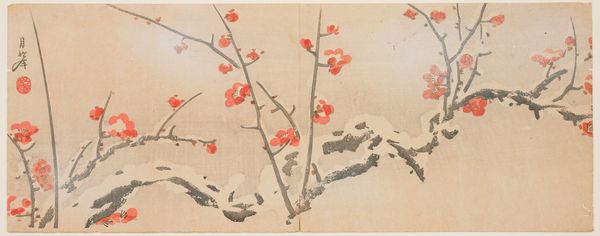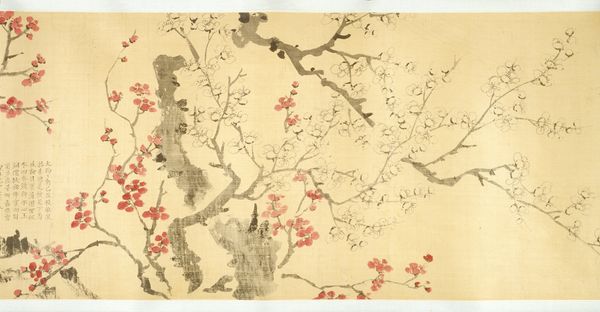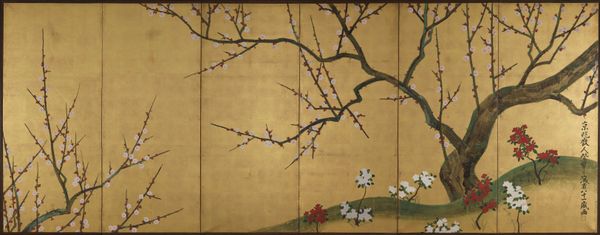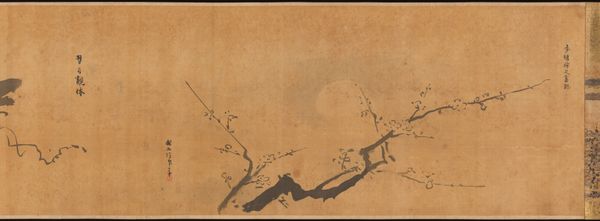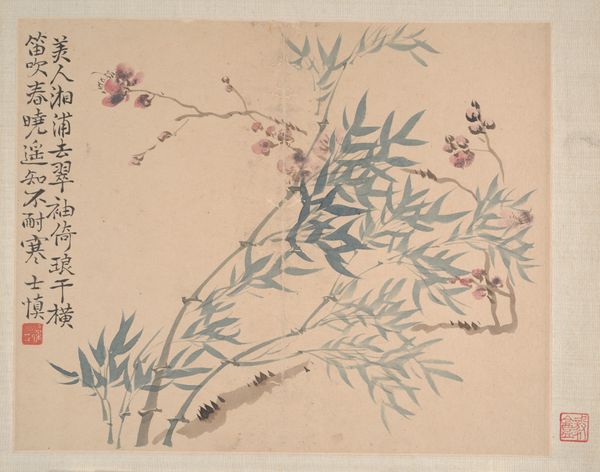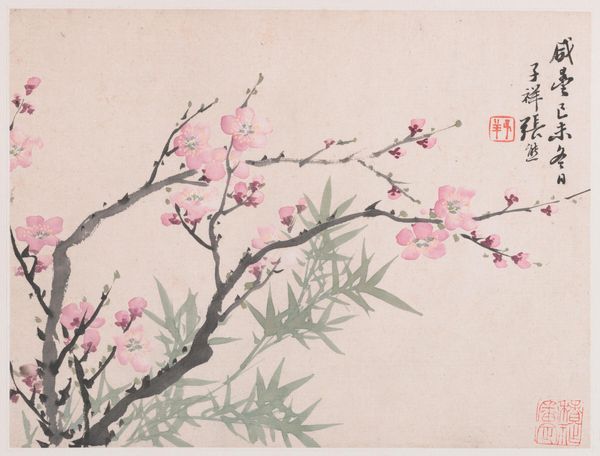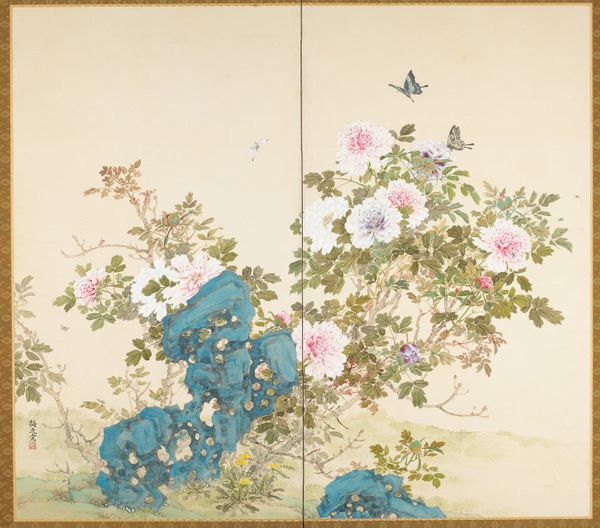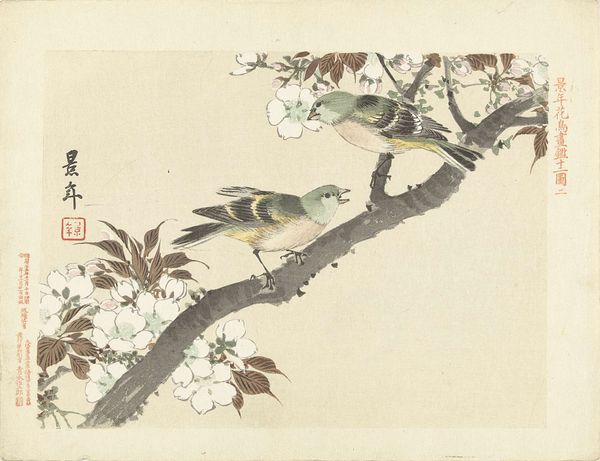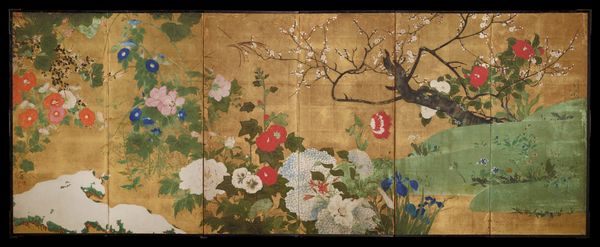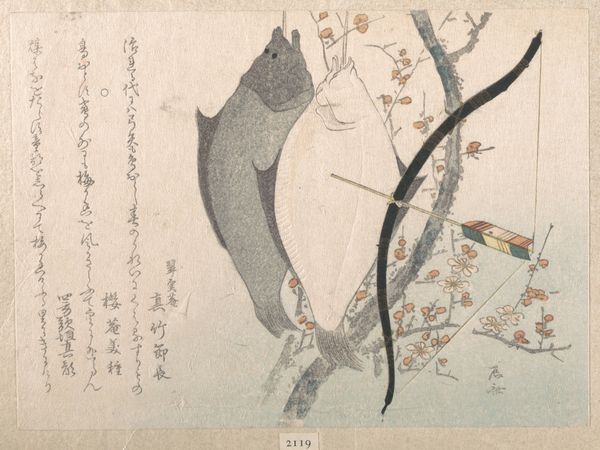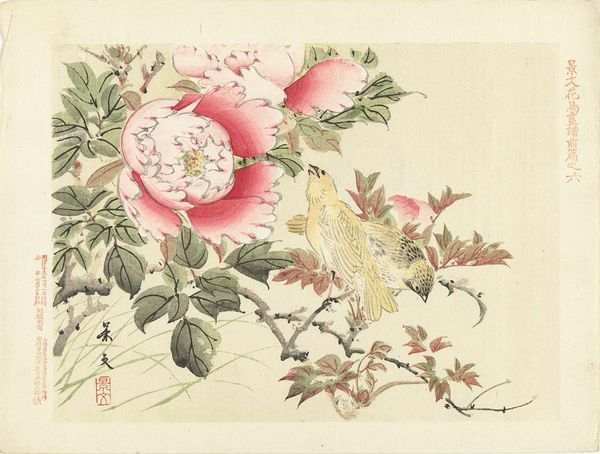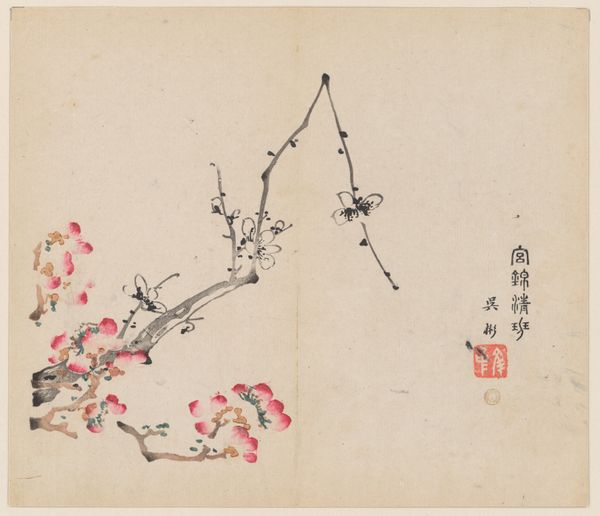
Dimensions: 13 3/8 in. x 30 ft. 4 3/16 in. (33.9 x 925 cm)
Copyright: Public Domain
Editor: So, this delicate watercolor is "Flowers of the Four Seasons," painted around 1815 by Sakai Hōitsu. It's like a whisper of spring, yet something feels slightly melancholic, a little like looking back at something fleeting. What do you make of it? Curator: Fleeting… yes, precisely. For me, this is the poetry of impermanence captured. It sings a song, doesn’t it? Do you notice how Hōitsu's gentle brushstrokes caress the paper, creating almost translucent layers? He invites us to contemplate not just the beauty of blossoms, but their transient nature. Editor: Definitely! The way the branches droop… they almost seem to weep. Is there any specific cultural significance here that would point us in a more detailed interpretation of its melancholy feeling? Curator: Indeed. The flowers themselves – plum blossoms, cherries – each carry layered meanings in Japanese art and culture. They are signifiers for beauty, hope, even sacrifice. Consider them arranged in the scroll. Aren't they placed to suggest the turning wheel of the seasons, an ongoing cycle? It’s a reminder that joy and sorrow coexist, isn't it, much like blossoms and bare branches. Editor: So it’s less about pure joy and more about accepting the passage of time. Curator: Exactly. There is wisdom within that delicate brushwork; something so delicate carries something very firm in a gentle way. The ukiyo-e roots and yamato-e aesthetic all dance together to speak to the very spirit of *mono no aware*, you know, the pathos of things. Don't you agree? Editor: I think so. I initially saw just pretty flowers, but now I see the beauty in understanding its ephemeral quality. Curator: See? The blossoms whispered their secrets.
Comments
No comments
Be the first to comment and join the conversation on the ultimate creative platform.
